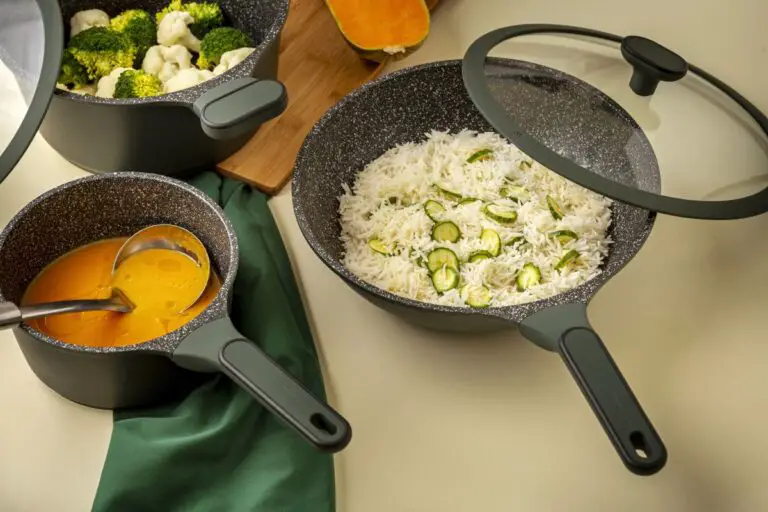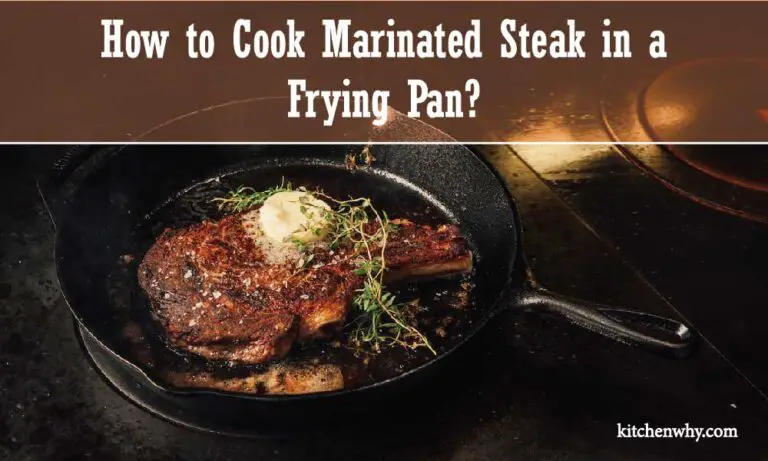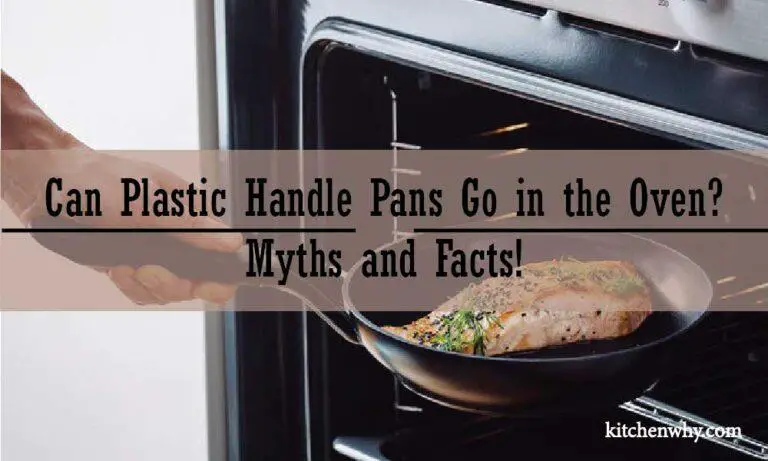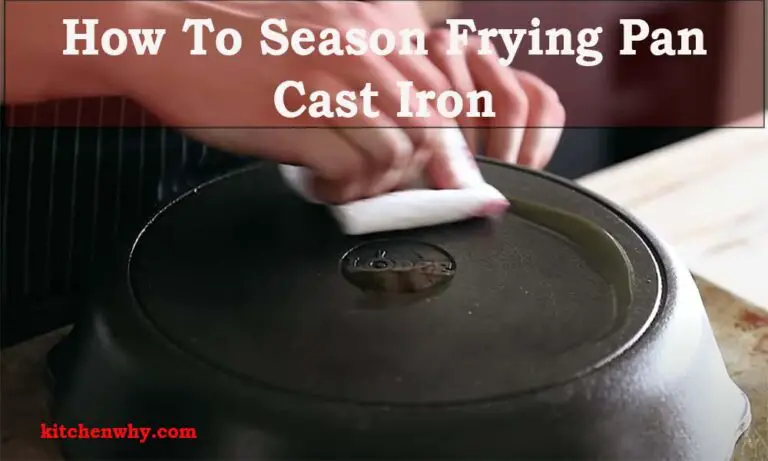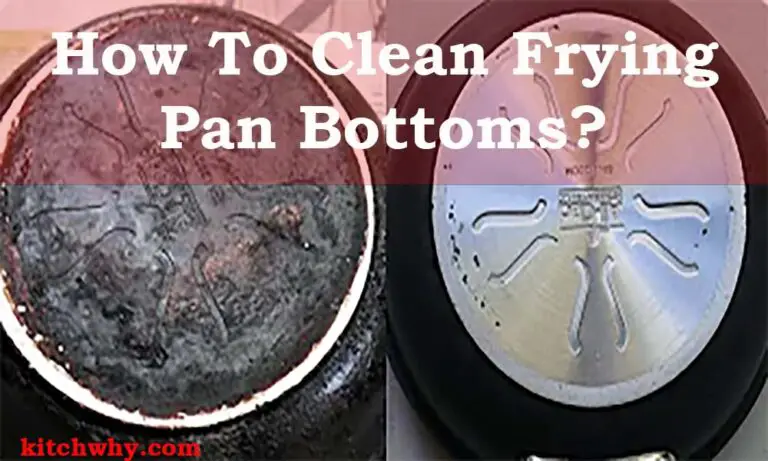How To Use Frying Pan? Learn The Secrets To Better Use

Cooking is an art that can be mastered with time, patience, and practice. One of the most essential tools in a kitchen is a frying pan. And learning how to use frying pan properly can make all the difference in your culinary creations.
Using a frying pan is quite simple. Start by heating the pan on medium heat, add some oil or butter, and wait for it to heat up. Then, add your ingredients and cook them until they’re done. Remember to stir occasionally and adjust the heat as needed.
However, a frying pan is a versatile and straightforward tool that can cook a wide range of dishes, from eggs to vegetables to meat. In this blog post, I will guide you through using a frying pan correctly. So, let’s get started.
How to Use Frying Pan?
Frying pans are one of the most commonly used kitchen tools. They are versatile and can be used for cooking various dishes. However, if you are new to cooking or have never used a frying pan, you may wonder how to use it.
Now, I will provide you with a step-by-step guide on how to use frying pan.
Step 1: Choose the Right Pan
The first step in using a frying pan is to choose the right one for the job. Many different types of frying pans are available, including stainless steel, cast iron, and non-stick. Each type of pan has its own unique set of advantages and disadvantages.
For example, stainless steel pans are durable and can be used on high heat but are not non-stick. Non-stick pans are easy to clean but may not be as durable as other types of pans.
Cast iron pans are great for searing and can withstand high heat, but they require seasoning and can be heavy. Consider the type of food you will be cooking and choose a pan that is appropriate for that type of cooking.
Step 2: Preheat the Pan
Preheating the pan is an important step in cooking with a frying pan. It ensures that the pan is at the right temperature before you start cooking. Simply place the pan on the stove over medium-high heat to preheat it. Let it heat up for a few minutes until it is hot to the touch.
Note:
If you use a non-stick pan, you should never preheat it empty. Always add a little oil or butter to the pan first.
Step 3: Add Oil or Butter
Once the pan is preheated, it’s time to add oil or butter. This will prevent the food from sticking to the pan and help it cook evenly. The amount of oil or butter you use will depend on the type of food you are cooking. For example, if you are cooking eggs, you may only need a small amount of butter. If you are cooking chicken, you may need more oil.
Note:
It’s important to use the right type of oil for cooking. Olive oil is great for low-heat cooking but may burn at high temperatures. Canola oil is a good all-purpose oil for frying.
Step 4: Add Food to the Pan
Once the oil or butter is hot, it’s time to add the food to the pan. Be sure to place the food in the center of the pan to ensure even cooking. You may need to adjust the heat as you cook to prevent the food from burning or sticking to the pan.
Note:
Don’t overcrowd the pan. If you add too much food at once, it may not cook evenly.
Step 5: Cook the Food
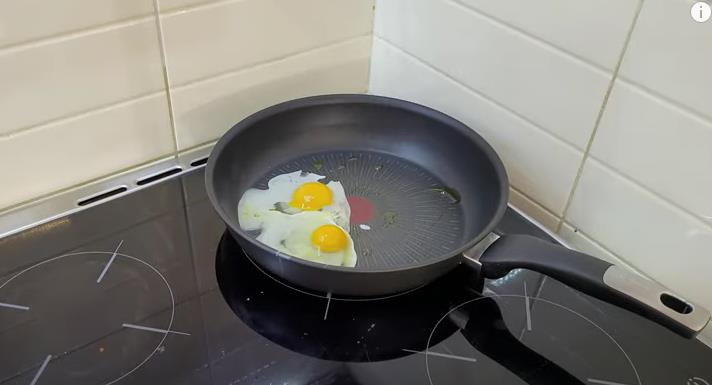
Now it’s time to cook the food. Use a spatula or tongs to flip the food as needed. Depending on the type of food you are cooking, you may need to cook it for several minutes on each side. Be sure to monitor the food closely to prevent it from burning.
Note:
If you are cooking meat, use a meat thermometer to ensure that it is cooked to the appropriate temperature.
Step 6: Remove the Food from the Pan
Once the food is cooked, it’s time to remove it from the pan. Transfer the food to a plate or serving dish using a spatula or tongs. Be sure to turn off the heat on the stove and let the pan cool before cleaning it.
Note:
Never use metal utensils on a non-stick pan. This can scratch and damage the non-stick coating.
Using a frying pan is easy once you know how to use frying pan. Following these simple steps, you can cook a wide variety of delicious dishes in no time.
You can also read my other information blog about How To Wrap A Frying Pan?
Additional Safety Tips For Using a Frying Pan
Here are a few more safety tips for using a frying pan in the form of short points:
- Use a pan with a lid to stop oil from splattering and lessen the chance of getting burned.
- In case of a grease fire, keep a fire extinguisher handy.
- Use heat-resistant gloves or a pot stand to keep your hands from getting burned when handling hot pans.
- Don’t leave a hot pan unsupervised, and cook close to the stove at all times.
- Avoid putting too much food in the pan so that oil doesn’t splash out and cause burns.
- Use a hob that is the right size for your pan to keep the heat from going beyond the edges of the pan.
What are some common mistakes people make when using a frying pan?

As long you know How To Use Frying Pan, let’s know about some mistakes when using a frying pan. People often make these mistakes when they use a cooking pan:
- Using the wrong temperature: One of the most common mistakes people make when using a frying pan is cooking at the wrong temperature. If the temperature is too low, the food will take longer to cook, get greasy, and lose its structure. If the heat is too high, on the other hand, the food will burn quickly.
- Overcrowding the pan: If you put too much food in the pan, it can cook unevenly and steam instead of fry. When food is packed too tightly, it can let out wetness and stop cooking properly.
- Not preheating the pan: It is very important to heat the pan before adding food because it helps the food cook properly and doesn’t stick to the pan. When the pan gets hot, it makes a surface that doesn’t stick to food. This makes it easy to cook food without too much oil.
- Using the wrong oil: If you use the wrong oil to fry, the food can taste burnt or bad. Oils with high smoke points, like vegetables, canola, or peanut oil, are best because they don’t break down at high temperatures.
- Using metal utensils on nonstick pans: Using metal utensils on nonstick pans can scratch the coating, making it wear out faster. To protect the non-stick layer, it’s best to use wooden or silicone tools.
- Too much moving or stirring: If you flip or stir food in the pan too often, it can fall apart or lose its shape. It’s best to wait a while before turning the food over or moving it.
- Not letting the food rest: Letting the food rest after it’s been cooked can help make sure it’s properly cooked and soft. If you cut into the food too soon, the juices can escape, leaving it dry and tough.
Frequently Asked Questions
Here are some commonly asked questions about how to use a frying pan:
What is a frying pan?
A frying pan, also known as a skillet, is a flat-bottomed cooking pan with slightly sloping sides, used for frying, searing, and sautéing.
What is the main use of frying pan?
The main use of a frying pan, also known as a skillet, is for cooking food by frying, searing, or sautéing. Frying pans are typically used for cooking dishes that require higher heat and quick cooking, such as eggs, bacon, vegetables, meats, fish, etc.
Must be read: How to Cook Marinated Steak in a Frying Pan?
How do I choose a frying pan?
When choosing a frying pan, consider the size, material, and handle. A 10-12 inch size pan is ideal for most cooking tasks. The material can range from stainless steel, cast iron, aluminum, or non-stick coating. Handles can be made of metal or silicone and should be heat-resistant.
How do I use a frying pan?
First, heat the frying pan on the stovetop over medium to high heat. Add oil or butter to the pan and wait for it to heat up. Once the oil or butter is hot, add your ingredients to the pan and cook them, stirring occasionally, until they are fully cooked.
How do I clean a frying pan?
Let the frying pan cool down first. If it has a non-stick coating, avoid using metal utensils that can scratch the surface. Hand wash the pan with soap and warm water. Avoid soaking the pan in water for too long, as it can damage the non-stick coating. For tough stains, use a gentle scrubber or a mixture of baking soda and water.
Can I use a frying pan in the oven?
It depends on the material of the frying pan. Most stainless steel, cast iron, and oven-safe non-stick pans can be used in the oven. Check the manufacturer’s instructions to see if your frying pan is oven-safe and up to what temperature.
Read more about Can You Put a Frying Pan in the Oven?
How do I store a frying pan?
Store your frying pan in a cool, dry place, and make sure it’s completely dry before storing it. If you have limited storage space, you can stack pans on top of each other, but place a towel or a paper towel between each pan to prevent scratches.
Final Opinions
In conclusion, mastering the art of using a frying pan is essential for every home cook. It allows for a variety of cooking methods, from searing and sautéing to pan-frying and stir-frying, making it a versatile tool in the kitchen.
However, to use a frying pan correctly, you need to understand the basics, such as choosing the right pan, controlling the heat, and adding oil correctly. Additionally, learning different techniques and recipes can take your frying pan skills to the next level. With practice and patience, you can become a pro at using a frying pan and elevate your cooking game.
So, if you are wondering how to use frying pan, remember to start with the basics and gradually build your skills. Don’t be afraid to experiment with new ingredients and techniques, and always pay attention to the heat and timing. With these tips in mind, you’ll be well on your way to creating delicious meals that will impress your family and friends.

